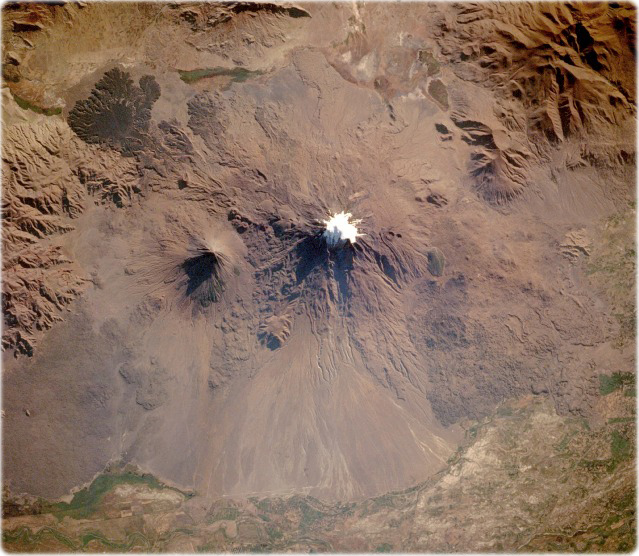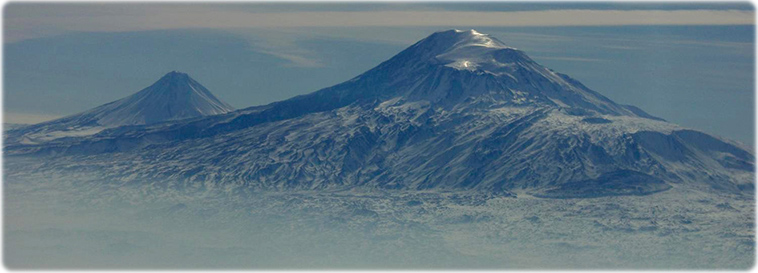
Mount Ararat
Mount Ararat (Turkish Ağrı Dağı) is an extinct volcanic massif in eastern Turkey, Asia. It consists of two peaks about 7 miles (11km) apart.
The Great Ararat is the traditional resting place of Noah’s Ark, reaches an altitude of 5169 meters above sea level, the tallest mountain in Turkey. Little Ararat is 3928 meters above sea level. Both are symmetrical, cone-shaped volcanoes composed of alternating layers of lava and ash. The widespread ash forms andesitic tuff, a grayish-white rock. Most of Great Ararat formed about two million years ago atop a block of uplifted rock during the Holocene Period. Little Ararat formed shortly thereafter. No eruptions have been recorded for either volcano. Nine glacial tongues escape downslope of Great Ararat from the permanent ice field, meet the snow line, melt, and produce streams. The rather high snow line (4700 meters) for a mountain this far north results from the dry surrounding region. Because of the lack of water, the area is relatively barren and uninhabited.
From medieval accounts, the Ararat region was a beautiful, forest-clad mountain with many human settlements and abundant wildlife. Deforestation, overgrazing, and a destructive earthquake in 1840, however, have severely impacted the area.
A view of Mount Ararat through the fog. Although located some 32 km (20 mi) from the Armenian border, the dormant volcano dominates the skyline of Yerevan, Armenia's capital. This photo was snapped after take off from the Yerevan airport.
Little Ararat
◄ Asia

Great Ararat

This near-vertical photograph features the Mount Ararat Massif in eastern Turkey. Snow-capped Great Ararat is visible near the center of the photograph (NASA, September 1994).
|
Copyright © Geographic Guide - Travel. |
